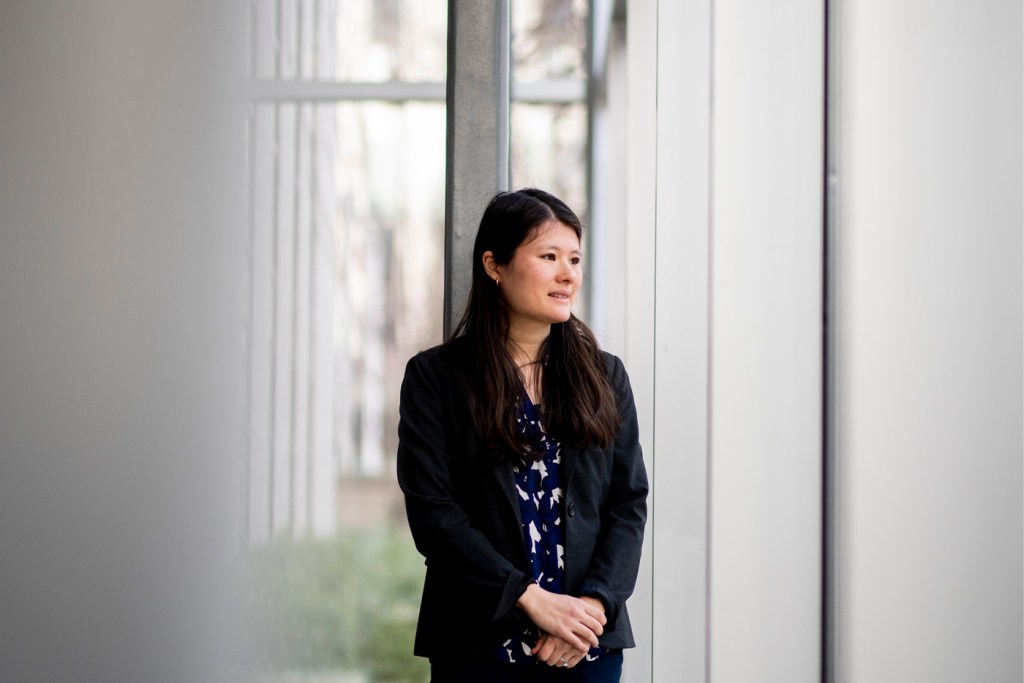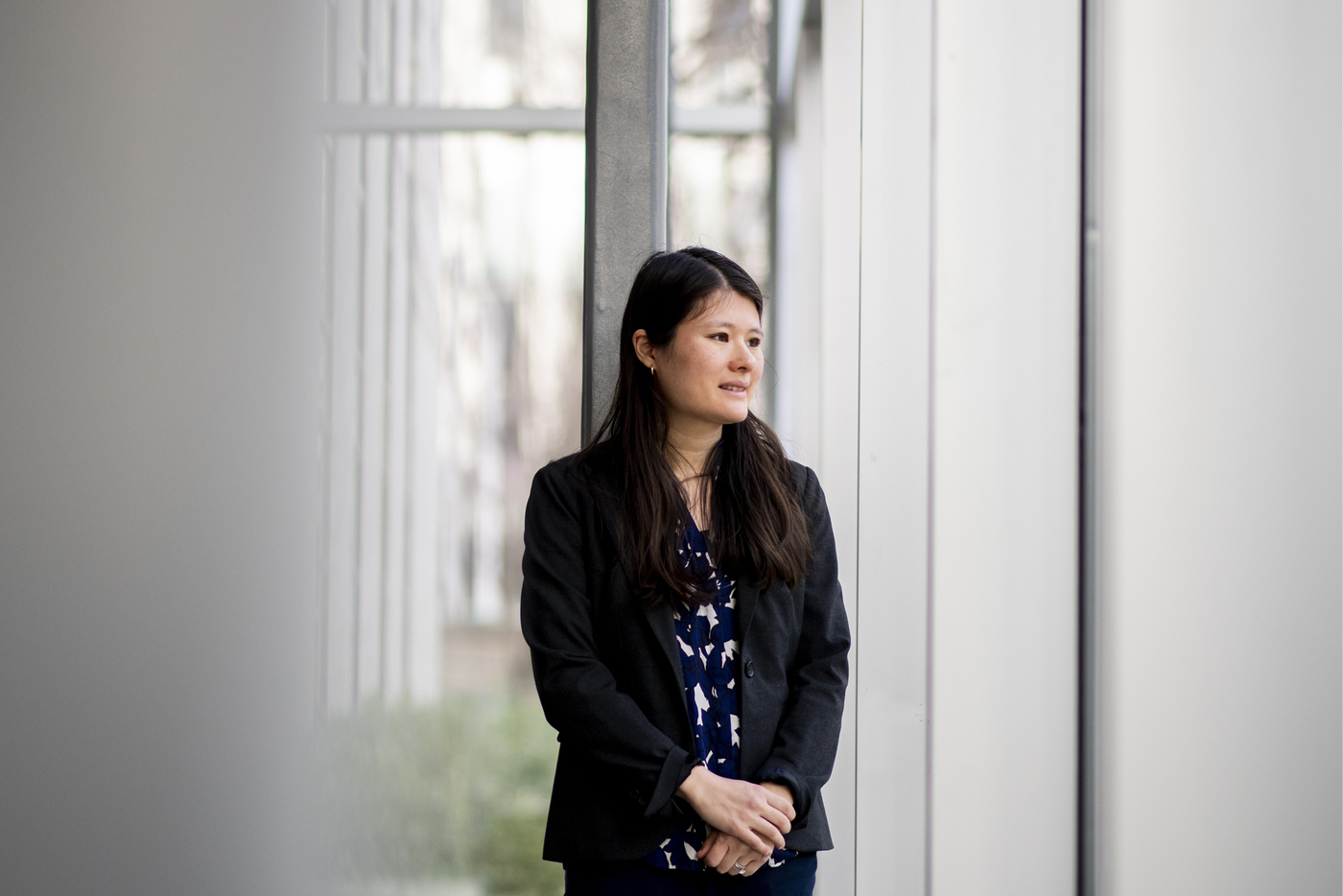Northeastern’s Racial Redress and Reparations Lab is creating a tool for lawmakers to pursue racial redress

The movement for reparations reached a major milestone in June when California released a 500-page report outlining the historic and ongoing harms perpetuated against Black people in the U.S. The exhaustive report, which also outlines potential forms of redress in areas ranging from education and criminal justice to housing and political process, has been hailed as a significant step in a movement that has gained traction in the wake of George Floyd’s murder in 2020.
The report was particularly exciting for Katie Sandson, program director of Northeastern’s Racial Redress and Reparation Lab.
“I think it’s really important because the process in California is likely to inform how others proceed, and it’s being pretty closely watched around the country,” Sandson said.
The report is likely to play a role in the work being done by Sandson and her team to create a toolkit to guide local and state legislators interested in pursuing reparations policies. In light of the California task force’s report and cities like Evanston, Illinois launching reparations programs, the lab’s work has taken on increased significance.

The toolkit, which Sandson said is still in the works, outlines examples of what has been done by state and local governments as well as specific categories of redress. The goal is to give lawmakers the information they need to determine what works best for their communities.
“This toolkit really provides a base of information that everyone can draw on to understand … the different policies that have been tried in the U.S,” Sandson said.
Although many people think about reparations as direct payments to descendants of historic injustices, there is more to redress than just money, Sandson said. More broadly, reparations involve apologies, acknowledgement, truth seeking, and memorialization, in addition to systemic and policy-driven initiatives in areas like housing, criminal justice, and education.
That requires a community to understand its specific historical context and the programs or funding sources it has access to. Reparations are not a one size fits all set of policies, Sandson said, so a common place that many cities and states start is with task forces and truth commissions.
“You’re seeing a lot of proposals of legislation to create task forces to really study and drill down on this issue and then from there develop reparations proposals, so along the lines of what you see in California, although they vary a lot in terms of scope and structure,” Sandson said.
While they focus on different aspects of racial injustice, Sandson said, these task forces and truth commissions all provide “thorough record of the harms that have occurred and also of the legacies of this history today, which itself is a central component of redress.”
In 2019, Maryland became the first state in the country to establish a truth commission focused on researching racial terror lynchings. In 2020, Asheville, North Carolina formed a community reparations commission to develop recommendations “to repair the harm done by decades of racial discrimination and systemic oppression against Black Asheville residents,” according to the city. Meanwhile, Amherst, Massachusetts, has its African Heritage Reparation Assembly, which will play a similar role.
Sandson said some local and state governments are also taking a community-based approach to reparations. Evanston’s restorative housing program is the first of these programs to be implemented. Funded with money from a new state marijuana sales tax, the program provides housing grants of up to $25,000 to Black residents who experienced housing discrimination in Evanston. Sandson said the program is at the forefront of the reparations movement, although it has been criticized for its small initial pool of 16 grant winners.
Sandson’s work focuses on providing resources to state and local policymakers, but she is adamant that the federal government also has a role to play in reparations. The federal government has more resources to dedicate to redress, while state and local governments can be more nimble and craft policies tailormade for their communities.
The delicate dance between federal, state, and local reparations is laid out clearly in the California report, another reason why Sandson believes it could have an impact on the national conversation.
“In each section, it talks about the role of the state and it talks about the role of the federal government, and so it’s definitely laying the groundwork to say, ‘We as the state of California think it’s important to do this, and we think it’s important for you, the federal government, to do the same thing,’” Sandson said.
Progress at the federal level is slow. A federal bill, which has been around since the 1980s and would establish a 13-person commission to study and develop reparations proposals, has languished in the House of Representatives since last January. However, at the state and local levels there is promise. With an “explosion of policies over the last two years,” Sandson hopes her team’s toolkit can be a resource for governments, whether they know the programs they want to pursue or are coming in with no clue of where to start.
“For policymakers who don’t have a defined idea of what they want to do yet, it’s helpful even just to understand that other jurisdictions are already doing this work,” Sandson said. “Part of the on-ramp is providing people with examples of what’s already happened, how it’s worked, and showing them that this would be part of a movement.”
For media inquiries, please contact media@northeastern.edu.






